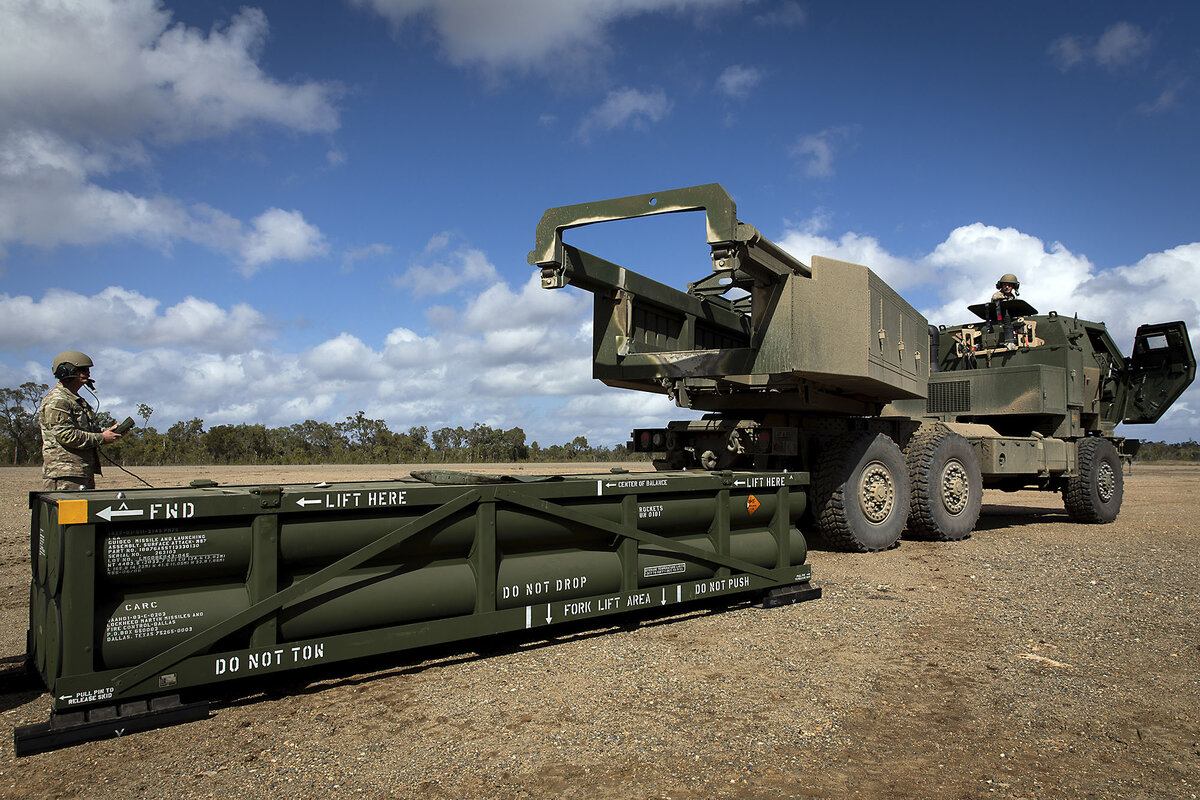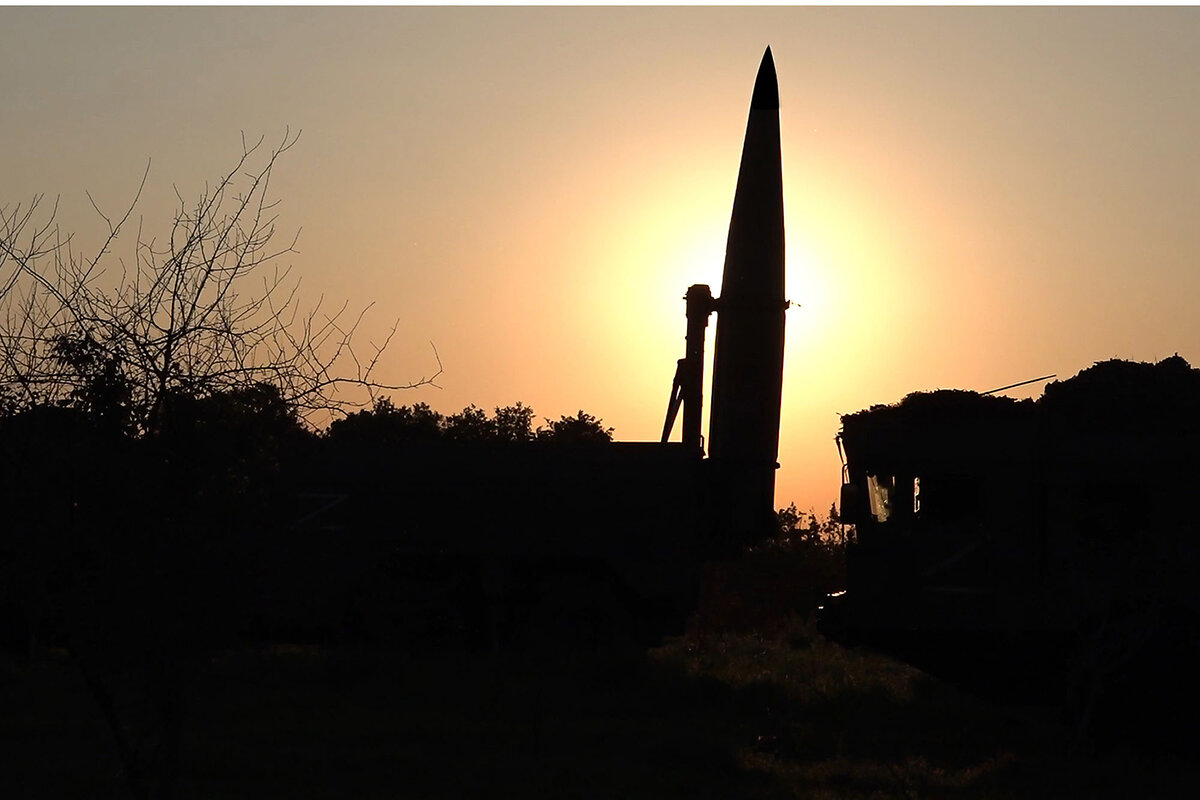Why Putin’s nuclear saber-rattling on Ukraine sounds different this time
| Moscow
Over the course of the war in Ukraine, the Kremlin has drawn several “red lines” – with ostentatious references to Russia’s huge strategic nuclear arsenal – only to seemingly do nothing when these lines are crossed by Ukraine or its Western backers.
It happened when Ukraine acquired new and more powerful Western arms. It happened when Kyiv used its own drones to hit Russian airfields, refineries, and even the Kremlin itself. Most recently, it happened when Ukrainian forces actually invaded Russian territory. That has led Ukrainians, and many NATO officials, to conclude that Russian President Vladimir Putin’s nuclear saber-rattling is an elaborate bluff.
But when Mr. Putin warned last Thursday that Moscow will consider it a direct act of war by NATO if British, French, or U.S.-made missiles are used by Ukraine to strike targets deep inside Russia, he said this time is different.
Why We Wrote This
A story focused onThe Kremlin has had little success invoking its nuclear arsenal to deter Ukraine and the West from deploying new tactics and modern equipment to stop Russia’s invasion. But that may be changing.
Many Russian experts agree. And for now, Washington seems to be heeding his threat and holding off on permitting Ukraine to use the weapons.
“Russia’s frustration has been growing because the West appears to have lost all fear of nuclear war. Deterrence is absent,” says Sergei Strokan, an international affairs columnist with the Moscow daily Kommersant. During the Cold War, he says, that fear drove both sides to the bargaining table, aiming to limit conflicts and control nuclear weapons.
“There is a growing feeling that the West needs some kind of a wake-up call, an event that would make them see they are flirting with World War III if they escalate these attacks against Russia,” he says.
Deterrence and the war in Ukraine
Mr. Putin, responding to a question from a journalist, distinguished the use of the weapon types being discussed – British and French cruise missiles and U.S.-made ATACMS ballistic missiles – from previous red-line scenarios because he said such weapons are too sophisticated to be operated by Ukrainians alone. He claimed they would require hands-on NATO assistance and satellite targeting and guidance to effectively carry out strikes deep inside Russia.
“This will mean that NATO countries – the United States and European countries – are at war with Russia. And if this is the case, then, bearing in mind the change in the essence of the conflict, we will make appropriate decisions in response to the threats that will be posed to us,” Mr. Putin said.
The Kremlin sounds like it’s treating this challenge as the final straw. For over a year Mr. Putin has been under public pressure from hawkish members of his security elite, led by foreign policy dean Sergey Karaganov, to “restore deterrence” by staging a demonstration nuclear strike in order to remind the West that Russia is a nuclear superpower that shouldn’t be trifled with.
It’s not clear what response the Kremlin may be mulling, but the Russian media are a hotbed of speculation about it.
At the mild end of the spectrum are steps such as cutting off diplomatic relations, especially with the NATO country that Moscow views as the most actively hostile one, the United Kingdom. Another idea would be to stage a demonstration nuclear weapons test, something Russia has not done since 1990. Some reports say the old Soviet Arctic nuclear testing site at Novaya Zemlya has already been prepared for that possibility.
Sergei Markov, a former Kremlin adviser, says a stronger response might be to attack NATO airfields in Poland and Romania where, he says, “We know Ukrainian F-16s are based. These aircraft would probably be used in launching those NATO missiles at us, so we would regard them as legitimate targets.”
Forthcoming changes to Russia’s official nuclear doctrine may radically change the calculus for unleashing nuclear weapons.
At present, Russia would be prepared to use atomic weapons only in the case that the country is attacked with them by a nuclear-armed power, or if the very existence of the Russian state is threatened amid a conventional conflict.
Mr. Markov says the amendments under consideration would lower the threshold for employing tactical nuclear weapons, perhaps making them an integral part of any future battlefield.
Another revision might change the provision that Russian statehood must be in peril to instead enable the weapons to be used when Russian “strategic interests” are threatened. It would also allow their use against non-nuclear states that are part of a coalition that includes nuclear-armed powers if they are attacking Russia.
Fear of nuclear war
According to Alexei Levinson, an expert with the Levada Center, Russia’s only independent polling agency, fear of nuclear conflict has been growing among the Russian population since the Ukraine war began, from around a quarter of respondents to over a third.
“In our focus groups, we find it is the second biggest fear after concern for the well-being of self and immediate family,” he says. “It has escalated since the beginning of the special operation and is at a constantly high level.”
One of Russia’s top security experts, Alexei Arbatov, told the daily Nezavisimaya Gazeta this week that the drift of events is very dangerous because of the widespread belief in the West that Russia would never use nuclear arms.
“This is a very serious misconception: at some point, nuclear weapons will be used, despite the risk of escalation and general catastrophe,” he said.
Mr. Strokan argues that Western observers do not appreciate the extent to which Mr. Putin is under pressure from hawks to his right, such as the nuclear strike advocate Mr. Karaganov.
“Putin is probably the most moderate politician in Moscow right now, and if it weren’t for him we’d probably get a collective Karaganov in power,” he says. “Even now they are expressing open impatience and asking, ‘Why haven’t we pressed the button already?’”








